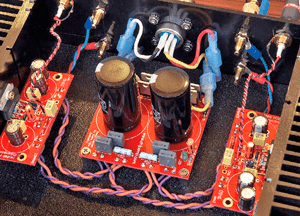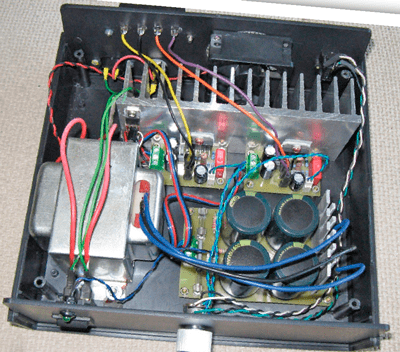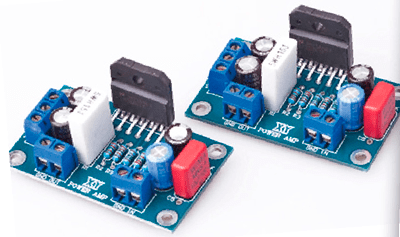 The building and tweaking of audio equipment is something that occupies many enthusiasts. It is very satisfying and nothing beats listening to music on equipment that you have built yourself, even partially. In this installment of WebScouting we'll show you that you don't need a complex design, or a large number of components, to produce a fine sounding power amplifier.
The building and tweaking of audio equipment is something that occupies many enthusiasts. It is very satisfying and nothing beats listening to music on equipment that you have built yourself, even partially. In this installment of WebScouting we'll show you that you don't need a complex design, or a large number of components, to produce a fine sounding power amplifier.
It's certain that not all audiophiles are techies. Most of them aspire to get as faithful a sound reproduction as possible, and technical details don't interest them. They're perfectly happy to just listen and trust their ears. This has caused many strange products to appear in the audio world, with their effectiveness questioned by the techies, such as wooden supports for loudspeaker cables...
In contrast, when you're choosing components for an audio amplifier you can certainly work out why they would sound different. The choice of the amplifier configuration also plays a big role, of course. When I was searching the Internet I noticed that there were many web sites that dealt with so-called chipamps or gainclones. These are simple audio power amplifiers that use a power amp module. Most of these were ICs from the Overture series made by National Semiconductor, which has since been taken over by Texas Instruments.
The popularity of these amplifiers, which were really designed for general audio use and not specifically for Hi-Fi (let alone high-end) equipment, began in 1999 with the introduction of the 4706 (Gaincard) amplifier made by the Japanese manufacturer 47 Laboratory [1]. The aim of 47 Labs was to create the best possible sound reproduction by using as few components as possible in the audio signal path. This amplifier consisted of just nine components per channel, which had an LM3875 at its heart (an IC costing a few euros). In various reviews the 4706, which cost several thousand dollars, was praised to high heaven. As a result, several other well-known audio amplifier manufacturers started to use this IC in their amplifiers.
This has encouraged many hobbyists to experiment with the ICs from the Overture series. There are even several specialist web shops that sell only components and PCBs for these ICs. Chinese manufacturers have also jumped on the bandwagon, and offer a fully assem-
bled board for less than $10. It uses the LM3886 [2], which is the most powerful IC from the Overture series that can output almost 70 W into 4 O. They also supply the required power supply boards very cheaply. At those prices you are beginning to question the quality of the components they've used.
The advantage of such a power amplifier is that it's very easy to experiment with different types of components, and of different qualities. All you need to add is a transformer, a bridge rectifier and several electrolytics, and you'll get some music. You can then find out what the sound is like when you use different types of electrolytics, or when you connect many smaller electrolytics in parallel, or when a different input capacitor is used, etc.
A good description of several experiments using this LM3886 chipamp can be found on the (Dutch) website of Dick van de Merwe [3]. The website of DIY Audio Projects has several projects based on chipamps, such as the DIY LM3875 (which they call 'The Beast') [4] and the DIY LM3886 Chip Amplifier (Gainclone) Kit [5].
It's even possible to build this circuit without the use of a PCB. An extensive set of photos that show you how it's done is shown on Mick Feuerbacher' website, Dogbreath [6].
Of course, Elektor got in on the act as well, publishing a design for the LM3886 in the Bumper Summer Issue of 1998 [7], when the IC had only just appeared on the market. It even included a PCB layout!
There are many more similar designs to be found on the Internet, why not have a look? The bottom line is that all these designs use a single IC along with a few passive components. It's hard to believe really. Oh well, you can't argue about taste and sound quality!

Figure 1.

Figure 2.

Figure 3.

Figure 4.

Figure 5.
Web Links
[1] www.sakurasystems.com/reference.html
[2] www.ti.com/product/lm3886
[3] www.audio-creative.nl/audio-creative/diy-lm3886-chipamp/
[4] http://diyaudioprojects.com/Chip/Beast/
[5] http://diyaudioprojects.com/Chip/LM3886_CA/LM3886_CA.htm
[6] http://dogbreath.de/
[7] https://www.elektormagazine.com/magazine/elektor-199807/34116
Author: Harry Baggen (Elektor Labs)
